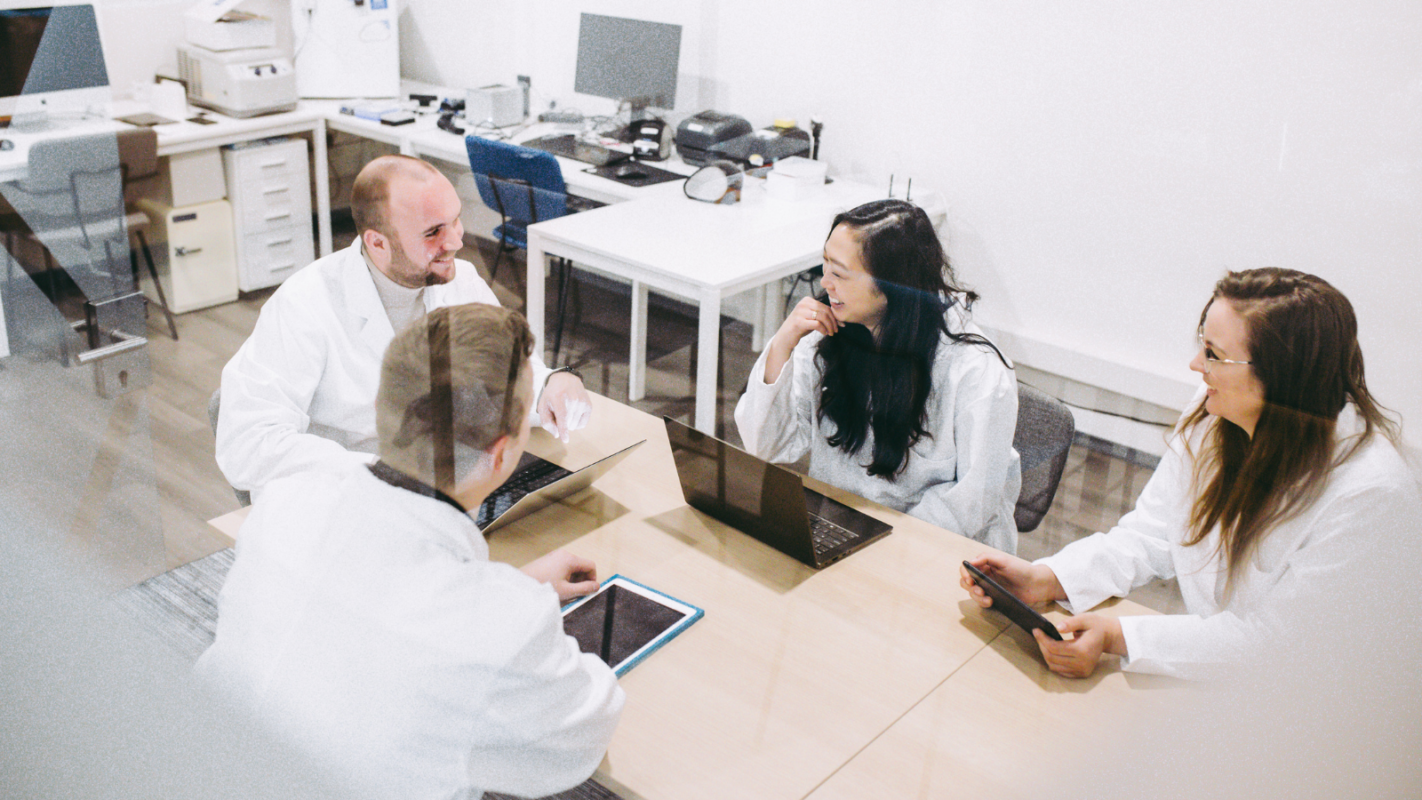

We live in a time when digital is taking over our lives and labs. Now more than ever, life scientists use digital tools to speed up timelines, work in a decentralised way, and keep data secure. The application of artificial intelligence (AI) and machine learning (ML) algorithms to diverse biological datasets is also increasing, generating deeper insights and answers to challenging biological questions.
Yet, there is still a large group of “digital holdouts” in the life sciences. Take paper notebooks, for example, which have been a traditional record-keeping format since the dawn of science. With the rise of “omics” and bioinformatics, many life scientists live a hybrid existence, keeping a paper notebook out of habit and tradition and using a digital platform for data generation, storage, sharing, and management. As a result, they find haphazard and ineffective ways to integrate the paper-digital worlds.
If you live in this world, then you know there are drawbacks to this approach. So, instead of laying out each one, we’ll use this time to sing the praises of an “all-digital” method provided by digital lab platforms, which offers numerous benefits to many lab tasks, such as protocol, inventory, and data management.
Here are ten of our favourite benefits.
Science has many inefficient tasks: Repetitive workflows, difficulty sharing large data files, errors in data transcription, and more. Digital lab operations can streamline processes and reduce the time and resources required to complete experiments. They provide a centralised repository for data and information, enabling personnel to share data and protocols in real-time, integrate with instruments, and automate traditionally manual tasks.
Data loss or inaccuracies during manual transfer are a common problem in science, particularly if data is stored in several locations or on several instruments. Digital lab platforms reduce the risks of these errors by integrating with various tools and devices and allowing the tracking and storage of laboratory information. These capabilities increase the security of data and the reproducibility of experimental results.
The centralised organisation of data in a digital platform is another significant benefit. Information is located in one place, accessible, and easily shared. Some platforms also allow integration with other data analysis and visualisation tools, effectively keeping raw, processed, and analysed data. This helps manage data across the entire organisation or research group from creation to destruction and every step in between.
Collaboration is integral to science, leading to deeper understanding and insight into complex biological questions. Yet, operating in a world where paper lab notebooks must be photocopied or photographed to facilitate multi-institutional collaborations is inefficient and downright primitive. Digital lab platforms enable rapid and simple sharing of data, protocols, and samples and easy management of assigned permissions, regardless of location, just like a Google Doc.
Because permissions can be easily managed and authentication, encryption, and network security can all be implemented and monitored on digital platforms, all information within a digital system is more secure. This reduces the risk of data breaches and unauthorised access.
A downstream benefit of the easy sharing and management of scientific data and results is allowing for peer review and replication of experiments. In addition, every action in a digital lab notebook can be tracked, providing a fully auditable record of every change made to data, protocols, or samples. These capabilities reduce the likelihood of data manipulation and increase the possibility of identifying errors before they become a problem.
Operating costs drop when personnel, processes, and workflows are faster and manual tasks get automated. Take sample storage, for example. Digital lab platforms can integrate with barcode generators and scanners to streamline this process, reducing the man and woman hours required to freeze many biospecimens.
Digital systems can help you meet regulatory requirements more efficiently by providing clear documentation and records. Audit trails and traceability are important features of regulatory compliance. Many digital lab platforms comply with essential regulations such as ISO 27001:2013, GDPR, HIPAA, and 21 CFR 11.
Digital tools can allow you to access your data and systems from anywhere. For organisations adopting more flexible work models or bioinformatics researchers who need access to data and computational capabilities, digital lab platforms can facilitate remote working without sacrificing collaboration or security.
As technology evolves, AI/ML models become more sophisticated, and digital platforms will become necessary for the scope of “big data” balloons. Adopting digital solutions can help your lab stay competitive and prepare for the future as technology evolves.
Advanced computational biology is increasingly used to answer fundamental biological questions and design, develop, and produce cell and gene therapies. ML, for instance, can make an even more significant impact than it already has, influencing how we analyse data and navigate the entire R&D process.
Here are a few ways it might do so:
When you stack these capabilities with those described above with digital lab platforms, the pace of research and the applications to everyday problems in a broad range of industries has the potential to reach breakneck speed.
Sign up today for a free demo of eLabNext’s platform, the most intuitive, customer-centric, reliable, and secure digital lab solution.

 By eLabNext
By eLabNext
Gain valuable strategies for choosing the right lab space, fostering collaboration, and achieving more with less money.
Read more
 By Zareh Zurabyan
By Zareh Zurabyan
From data quality to ethical considerations, learn how to navigate AI challenges while optimising integration for enhanced lab operations.
Read more
 By eLabNext
By eLabNext
Learn how to optimise lab procurement as part of a robust inventory management regime. Explore best practices and streamline lab ops.
Read more
Schedule a Personal Demo for friendly expert guidance and a free lab workflow assessment.